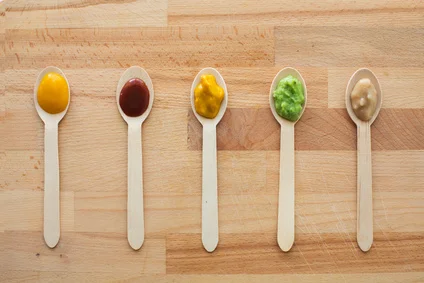Baby's First Foods
/The Importance of Iron in First Foods
Introducing solid foods to your baby is an exciting time. There is a whole world of food experiences that lay ahead – so many flavors and textures to try! So, where to start? For a long time, it was a forgone conclusion that babies would start with rice cereal. After all, a majority of pediatricians recommended it because the thinking was that rice cereal was an easy to digest food, unlikely to cause an allergic reaction, yet still provided a good source of iron.
The fact that rice cereal provides iron is important because around the same time that many babies are ready to start solid foods (6 months), their body’s iron stores from birth are beginning to run low, so they need to start getting this mineral from their diet.
While all of these benefits of rice cereal are still true, these days many parents are choosing other options as their baby’s first food. Fruits and vegetables often provide more vitamins and minerals than what is in rice cereal. While rice cereal does provide iron, so do many other foods such as chicken, beef, tofu, beans and leafy green vegetables.
Room for Rice?
Additionally, there has also been some concern that rice cereal contains arsenic, a natural element found in the environment in both organic (typically non-toxic) and inorganic (toxic and carcinogenic) forms. Arsenic in the soil and water is absorbed into a plant’s root system as it grows. Rice is especially susceptible to this as it grows in water flooded conditions, causing levels of arsenic in rice to be higher than that found in others foods.
While the levels or inorganic arsenic in rice cereal are low, one way to minimize exposure is to give your child a variety of iron fortified grain cereals such as oat, barley, and multigrain, instead of relying solely on rice cereal.
In 2016 the U.S. Food and Drug Administration (FDA) released a proposal to limit inorganic arsenic in infant rice cereal. The FDA, as well as the American Academy of Pediatrics (AAP), recommends that consumers, including infants and children, include a variety of grains in their diet.
Ultimately, whether you start with rice cereal, or a different food, is up to you. Some good options, aside from rice cereal, include soft foods such as avocado puree, sweet potato puree or green bean puree. Your child will likely start with only 1 or 2 tablespoons of a new food and will gradually increase to 3 or 4 tablespoons over time. Whatever you choose, know that there is definitely room for rice cereal in a healthy, well-balanced diet for your baby as long as it is just one source of iron, rather than the only source.
Keep in mind to start with one food at a time and stick with that food for 5 days before introducing another. That way if your child has a stomachache, or shows any signs of an allergy, such as a rash or vomiting, you will know which food is the cause. As long as your child can safely and comfortably swallow the new foods you introduce, and they show no signs of allergy, you can help them to gain an appreciation for a variety of nutritious foods by exposing them to these flavors early.
References:
American Academy of Pediatrics. (2017) Infant Food and Feeding. Retrieve from https://www.aap.org/en-us/advocacy-and-policy/aap-health-initiatives/HALF-Implementation-Guide/Age-Specific-Content/pages/infant-food-and-feeding.aspx
American Academy of Pediatrics. (2016) Tips to Reduce Arsenic in Your Baby’s Diet. Retrieve from https://www.healthychildren.org/English/ages-stages/baby/feeding-nutrition/Pages/reduce-arsenic.aspx
Middleberg, S. (2016) The Big Book of Organic Baby Food.


